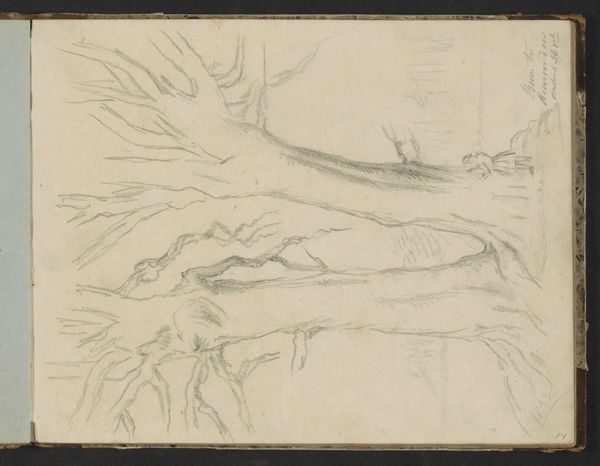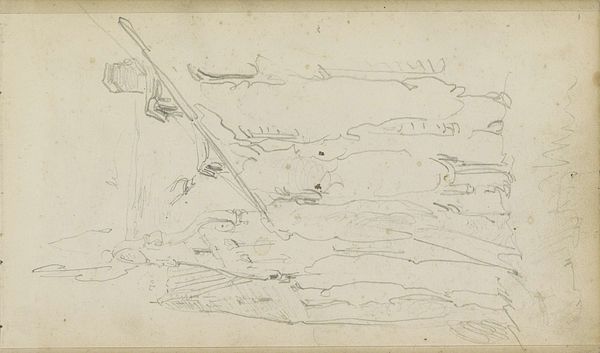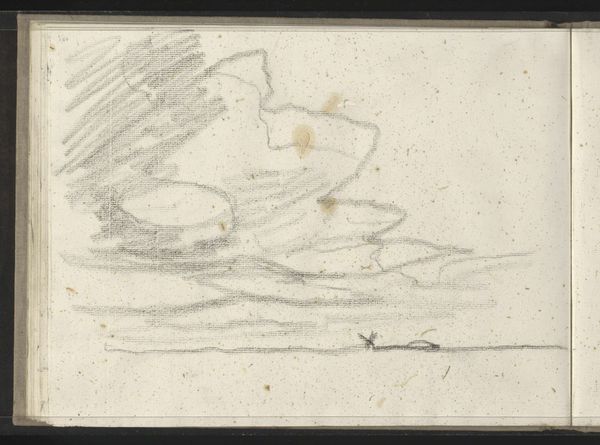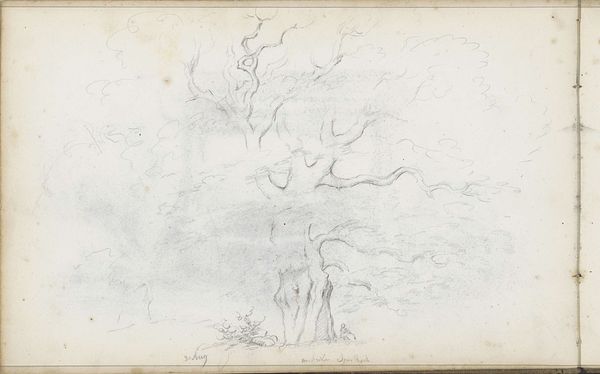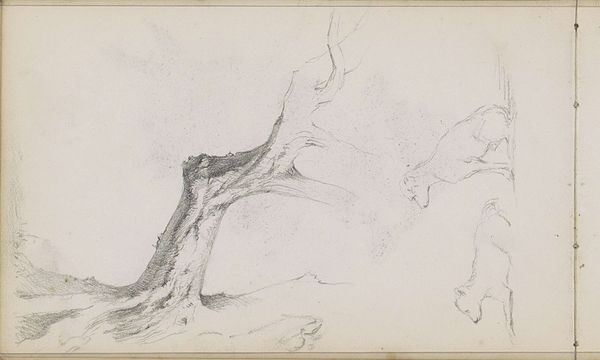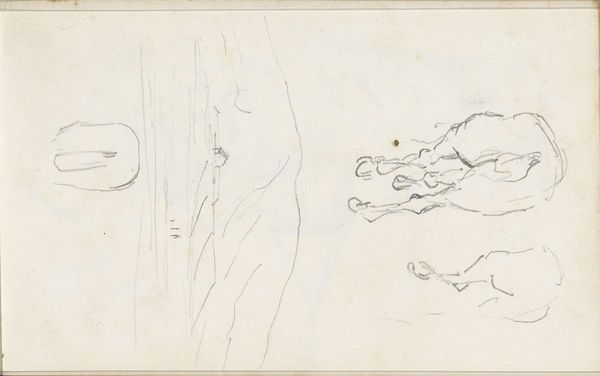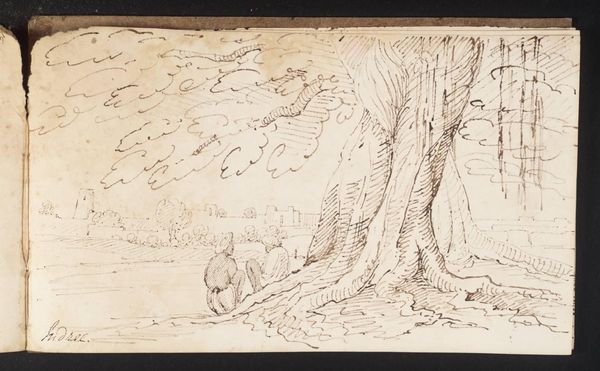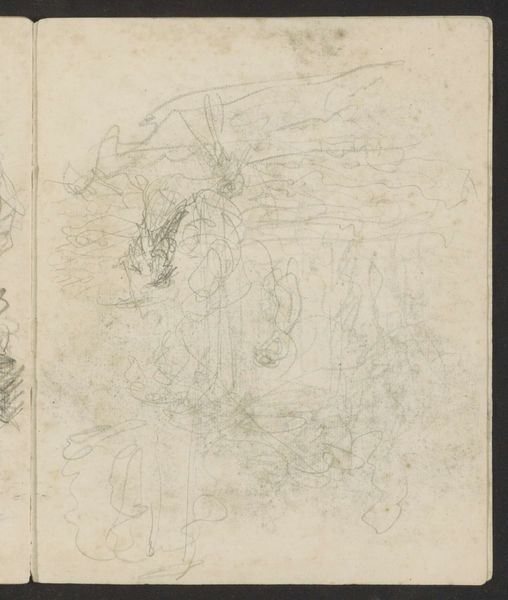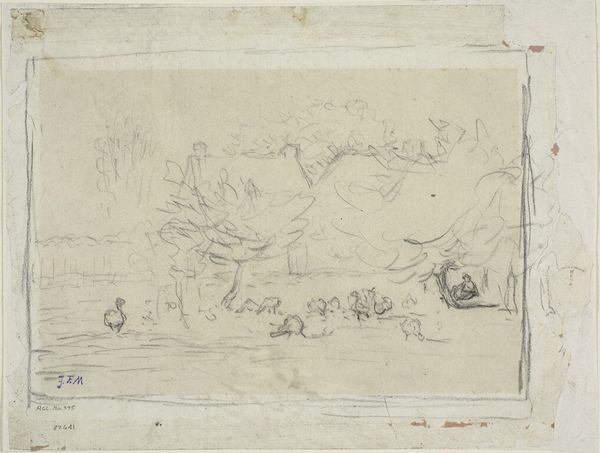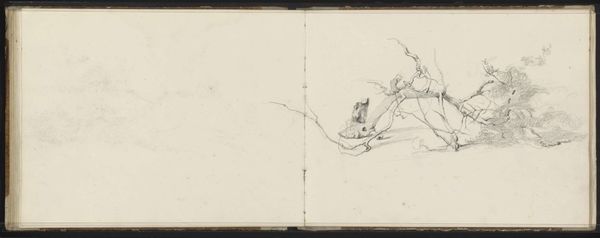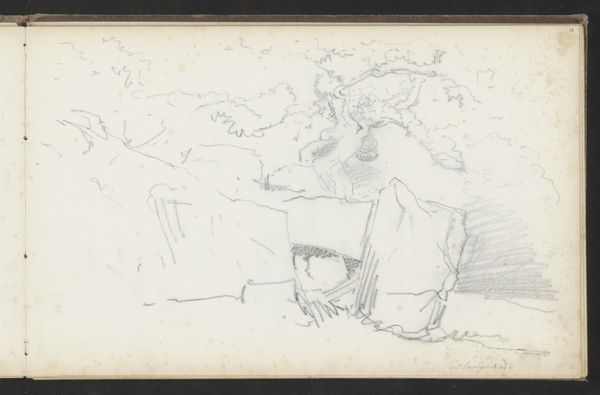
drawing, plein-air, paper, pencil
#
drawing
#
impressionism
#
plein-air
#
landscape
#
paper
#
pencil
#
naturalism
Copyright: Rijks Museum: Open Domain
Curator: Jozef Israëls's "Boom bij een hek," created around 1869, presents a subtle yet poignant view. This plein-air drawing on paper captures a tree beside a fence. Editor: Immediately, I'm drawn to the deliberate rawness. You can almost feel the artist capturing the scene quickly, the energy in each pencil stroke highlighting a kind of mundane beauty. Curator: Israëls, deeply embedded within the Hague School of painting, frequently turned to landscapes reflecting the social realities of his time. What’s fascinating is the context, considering the prevailing Romantic idealism: he brings a form of naturalism focused on the ordinary, in this case a quiet spot by a fence. How does the labor aspect factor in here? Editor: Exactly, and notice the method. Pencil on paper -- easily transportable, economic. Plein-air techniques democratize the creation process. Consider the materiality; the paper itself bears witness to the ephemeral nature of sketching outside. Curator: The fence as a motif. Does it separate or provide passage? The gate as an emblem of bourgeois life - its material making references back to broader concerns about rural labour and industrial progress, no? The artwork exists at this fascinating nexus. Editor: Precisely. We see these materials, but how was the tree actually processed for consumption? Was this the site of industrial felling? How does it relate to the economic dynamics present during that era of The Hague School. Curator: The composition encourages questioning the narratives linked to nature versus society. Israëls challenges us to inspect closely what that relationship symbolises. Editor: I appreciate the honest display of labor and material process and in the finished artwork: that makes Israëls’s intentions quite clear. Curator: Ultimately, I observe an understanding about the intertwined essence of art, labor, and social commentary in a subtle yet profoundly articulated visual statement. Editor: Indeed. We can appreciate his craft as evidence that these elements—material and making—help unveil broader narratives of art’s social relationship.
Comments
No comments
Be the first to comment and join the conversation on the ultimate creative platform.
